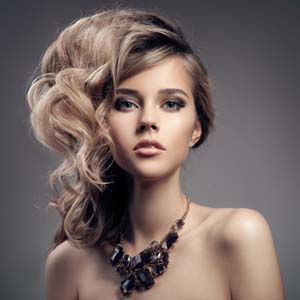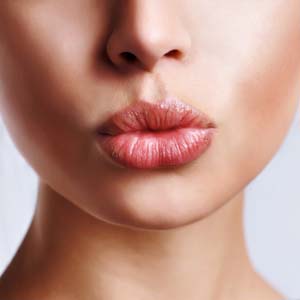By Doctors Philippe Kestemont and Cécile Winter
The face’s beauty is often correlative with the softness of its contours and the harmony of its proportions. What are the mechanisms of facial aging, the areas that hollow out, and the treatments that enable us to avoid looking “done”?
The anatomical bases
The face’s framework is made up of bones covered with fat compartments which are retained to various degrees by fibrous bands. We have all seen pirates’ skulls with two large square holes (the eye and lower eyelid) and a central triangle (base of the nose and start of the nasolabial folds).
These are two large areas of the face which hollow out over time due to the loss of fatty volumes and bone support. The third area that hollows out is the temple, as it is a deep gutter covered in fat, across which stretches one of the temporal muscles of mastication, which moves whenever we eat.
Hollow volumes
Let us describe each of the hollow areas by linking the anatomy with aesthetics:
– The lower edge of the eye socket: Cheekbone fat covers the lower eyelid when we are children (just look at a baby’s face!) then this deep and superficial fat disappears, thinning the skin and leaving the lower eyelid vulnerable. Under the effect of the powerful eye muscle, the cheekbone can sometimes become flattened and its middle emptied by the fold of muscle that lies across it. The curvatures are reversed: the lower eyelid becomes convex and the apple of the cheek becomes concave, which makes the person look tired.
– The base of the nose: The nose loses the periodontal and fatty support around its base and the angle it forms with the mouth becomes narrower. One either side of its base, the beginnings of a nasolabial fold start to appear. A concave area of shadow is created on either side of the nose. This is the birth of the nasolabial fold.
– The outer edge of the eyebrow: A youthful expression is one with a full eyelid, a full temple and an upward-pointing eyebrow tail.
How to treat these hollow areas
– The area of shadow under the eye may just cover the under-eye area or continue down the cheekbone via the tear trough. To treat just the under-eye area, we use fairly thick hyaluronic acid with limited absorbency (half a syringe per side is usually enough). For hollow cheeks we use a more fluid and volumising hyaluronic acid, since this is a dynamic area, and often a full syringe per side.
Sometimes, the dark under-eye shadow is caused not only by a lack of volume but also because the skin of the eyelid is thinner. In these cases, treatment by lipostructure and/or PRP will increase the volumes like hyaluronic acid and will also improve the skin quality of the eyelid by providing growth factors (micro/nano-lipostructure). This way, the skin of the eyelid will become thicker, healthier and less blue. The choice of product is very important, because it must respect the static and dynamic anatomical properties of each fat compartment to be treated and the properties of the skin that covers it.
– The nasolabial folds can be smoothed using hyaluronic acid, which provides support, both in depth and superficially. In this highly mobile area, hyaluronic acid gives a more predictable correction than fat.
– The temple is an area of weakness because it is a deep fossa surrounded by bone. To the front lies the outer edge of the eye socket, below it lies the arch of the cheekbone and above it lies the temporal arch, which is the edge of the forehead. The appearance of these bony perimeters can be camouflaged using hyaluronic acid. The product should be placed deeply using a syringe, close to the upper and anterior bone arches (since the sides of the fossa are near the skin), then using a cannula under the skin in the centre of the fossa. Since the fossa is very deep, a lot of product is required to lift the tissue.
Doctors Philippe Kestemont and Cécile Winter

Both Surgeons of the Face and Neck, they divide their time between cosmetic and reparative surgery of the face, and aesthetic medicine for the face and anatomy. Their passion for the anatomy has earned them a role as expert consultants for university courses and at international congresses. The synergy between the anatomy, injections and surgery enables them to constantly improve how they treat the face, while making sure that the patient’s safety is their number one priority.












